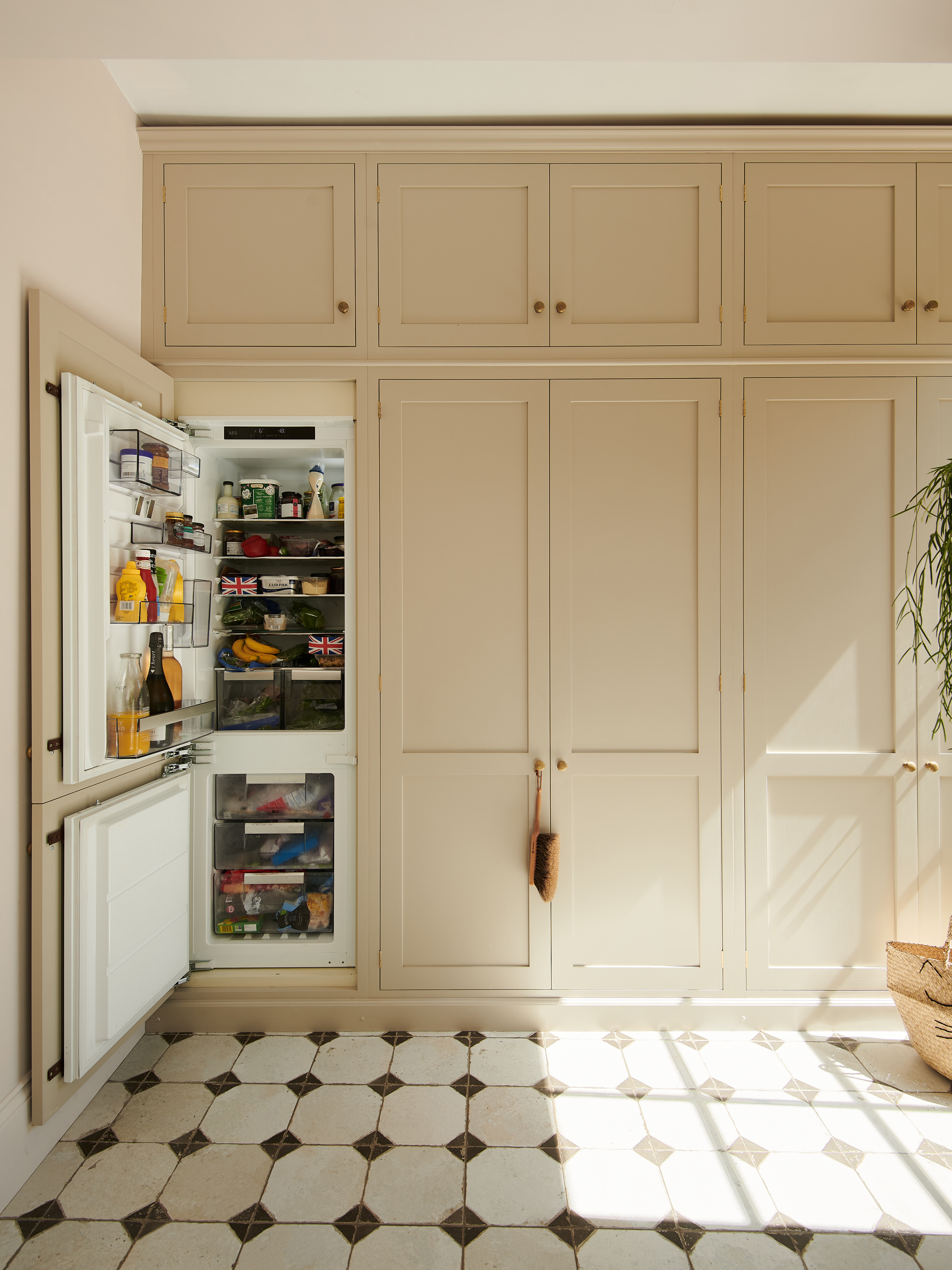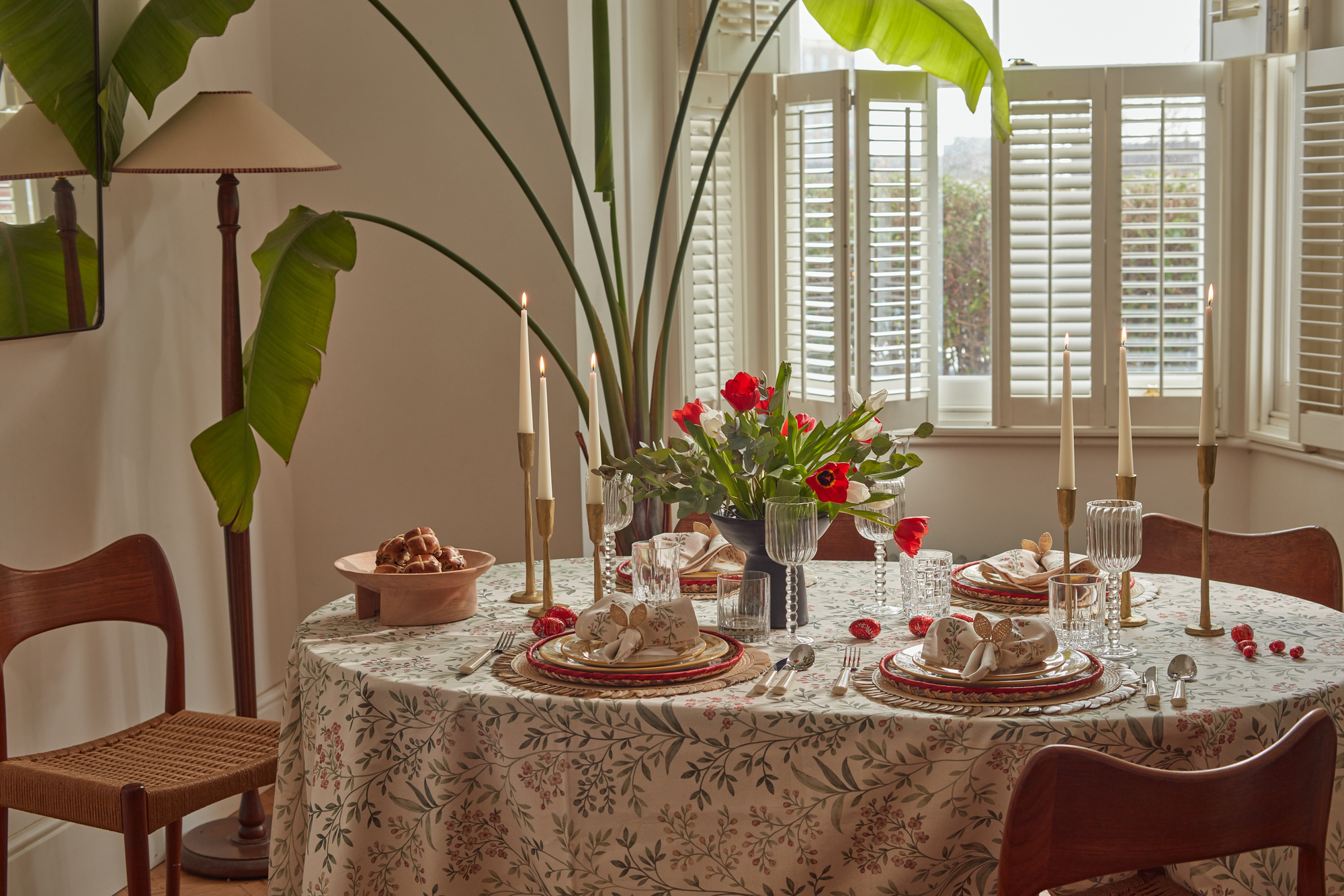How to organize a fridge – 5 things professional organizers want you to know
Experts explain how to organize a fridge to maximize space, extend food shelf life, and make meal times simple


Learning how to organize a fridge can feel like sitting a degree-level masterclass given the number of dos and don'ts involved. But while there might be a lot to learn, a well-organized fridge can save you time, money and effort further down the line.
Although fridges are only a small part of a modern kitchen, they're nevertheless an important one – yet, we often refuse to give them the attention they deserve. Because of this, opening your fridge door can feel like opening Pandora's Box. We've all been there – a mess of ketchup bottles, jam jars and squashed tomatoes clattering to the kitchen floor and landing in a sticky mess at your feet.
But these kinds of catastrophes can be easily avoided. Keeping your fridge well-organized will prevent it from turning into the mammoth task it can so often become. Not only that, but it's incredibly satisfying! Knowing exactly where to reach without the need to even open your eyes (although we don't recommend trying) is a sure sign your fridge is organized. To help you get there, we've asked some professional organizers for their five top tips to achieve the organized fridge of your dreams.
How to organize a fridge, according to professional organizers
Spare a little time to keep your fridge in check. Some tips don't really need explaining but as a gentle reminder, throw old food away – no one likes to find festering food that's so moldy it's beyond recognition. Give your fridge a regular clean, too. It may not be the easiest task, but remove the shelves every once in a while and give them a proper clean. Don't forget about the drawers, door and seals either – dirt loves to collect within their corners and crevices.
1. Always keep raw and cooked food separate
It may have been the first ever lesson of your home economics class at school, but that makes it all the more imperative. Never place raw meat next to fresh fruit and vegetables or food that's already been prepared.
Make sure meat and fish is in a seal container as you don't want any drips finding their way into your ready-to-eat produce. It's not just a disgusting thought but a health risk too: most cases of food poisoning are caused by food contamination when nasty bacteria such as salmonella find their way into our gut.
The best way to ensure different types of food are stored in the best place in the fridge is by creating designated zones and shelves dictated by temperature.
'Our appliances are often laid out (and sometimes labelled) for certain foods,' says Claire, owner of the organized living blog, Every Little Thing. 'Check your fridge manufacturers' guidelines for where is best to place each category for optimum freshness, longevity and food safety.'
As a rule of thumb, raw meat and fish should be stored on the bottom shelf where it's coldest, while deli meats, leftovers and other food stuffs that don't need cooking should be kept on the top shelf. The drawers should be reserved for your fruit and veg, while the door should be used for longer life products.
2. Use designated containers
We're all familiar with the ultra-organizers who have special containers for every type of food imaginable. While it might seem a tedious task, using designated containers is the perfect way to keep your fridge organized while maximizing space.
'Containers give structure and help use all available space which is especially important in small fridges,' says Claire. 'I use IDesign Containers. They do a large range of fridge containers to suit every category and size of fridge.' If you're really feeling on top of things, she recommends labeling your containers to avoid any mix-ups - a great pantry storage idea, too.
It's a good idea to get a narrow container for your fridge door, Sue Spencer, professional declutter and founder of A Life more Organised, adds. 'Door shelves tend to be very shallow which means large bottles can go flying when you open the door,' she explains. 'People then lay the bottles down on a fridge shelf which takes up loads of room. Using one of these organizers overcomes that issue.'
To really maximize utility, you can even make use of wall space in your fridge if you want to go the extra mile with your organization. 'Add suction cup baskets to the walls of your fridge to contain small items, like small packets, juice pouches, or single-serve cheeses,' says Holly Bly from Organize with Holly. Try this suction cup shower caddy from Amazon, or check out these other storage hacks for the rest of the home.

3. Use the KonMari method
This method comes from world-famous Japanese organizing consultant, Marie Kondo. The idea is to tidy by category, not by location, allowing you to focus on the job at hand and prevent getting overwhelmed.
When it comes to organizing a fridge, the KonMari method says it's best to arrange by height. 'Store items vertically wherever you can as it makes the best use of space,' says Sue, who is a certified KonMari consultant. 'I store all my vegetables vertically in the drawer as I can fit more in and it means that nothing ends up festering under the other items.'
Most fridges also have adjustable shelves so you can adjust the height to accommodate taller items, like bottles of milk.
4. Rotate your items
'Without a good system, food is more likely to go to waste. Things get shoved to the back and forgotten about, or we purchase items we already have,' says Claire of Every Little Thing. We can all do more to minimize our food waste, and a cluttered fridge is a perfect recipe for increasing your amount of out-of-date food.
After a long day's work and a scurry around the supermarket, we often shove ingredients straight into the fridge pushing the existing food into the cold abyss. How many times have you stumbled across last week's forgotten leftovers covered in a layer of green fluffy mold, or gone to grab a jar of jam only to find out it's frozen to the back of the fridge?
Keep on top of food waste and reduce the amount you throw away by rotating regularly. 'When you unpack your weekly shop make sure you rotate the items you already have in your fridge,' says Sue. 'Put the closest dated items at the front so they are used up first.'
5. Remove outer packaging before storing
While we're on the topic of waste, one thing we can all agree on is the unnecessary amount of packing our food is sold in. Products such as yogurts and cans of drinks sometimes come in two sets of outer packaging, as well as a separate sleeve. Clunky packaging might serve a purpose when it comes to transporting your food shop home, but it does very little except cause clutter when it comes to stocking your fridge.
Remove outer packaging as you unpack your shop to make more space and keep your fridge organized. 'I prefer to get rid of packaging whenever possible,' says Claire. 'It's much easier to see what you have at a glance and it also reduces the visual clutter.'
Sue notes that it might be best to keep products in their outer packaging if individual packets don't have a sell-by date on them. Certain products don't last as long when removed from their original packaging. 'I don’t recommend removing eggs from the egg boxes they come in,' says Sue.
She adds: 'British Lion (the official voice of the UK egg industry) recommends that eggs should be stored at a constant temperature. I never store eggs in fridge doors and instead use their original cartons as egg shells are also porous and can take on the odor of other items in the fridge.'
Should you keep milk in the fridge door?
The door probably isn't the best place for your milk, as most of us would believe. 'The door is the warmest part of the fridge and has the least consistent temperature due to it being opened and closed frequently,' notes Sue Spencer. 'It’s best to use the door to store things like condiments and non perishable items like juices and jams.'
Be The First To Know
The Livingetc newsletters are your inside source for what’s shaping interiors now - and what’s next. Discover trend forecasts, smart style ideas, and curated shopping inspiration that brings design to life. Subscribe today and stay ahead of the curve.

Lilith Hudson is a freelance writer and regular contributor to Livingetc. She holds an MA in Magazine Journalism from City, University of London, and has written for various titles including Homes & Gardens, House Beautiful, Advnture, the Saturday Times Magazine, Evening Standard, DJ Mag, Metro, and The Simple Things Magazine.
Prior to going freelance, Lilith was the News and Trends Editor at Livingetc. It was a role that helped her develop a keen eye for spotting all the latest micro-trends, interior hacks, and viral decor must-haves you need in your home. With a constant ear to the ground on the design scene, she's ahead of the curve when it comes to the latest color that's sweeping interiors or the hot new style to decorate our homes.
-
 Lone Fox's Drew Michael Scott Drops a Vintage Capsule with Joon Loloi (And Some Seriously Good Tips For Thrifting Antiques)
Lone Fox's Drew Michael Scott Drops a Vintage Capsule with Joon Loloi (And Some Seriously Good Tips For Thrifting Antiques)Sourced straight from one of the world's biggest antique shows, Drew shares how to stay sane, cut through the noise, and score what you actually want
By Julia Demer Published
-
 9 Easter Table Decor Ideas to Plan Now for Perfect Tablescapes This Season
9 Easter Table Decor Ideas to Plan Now for Perfect Tablescapes This SeasonFrom centerpieces and color schemes to tablecloths and seasonal themes, let these designer-approved ideas inspire your table styling this Easter
By Lilith Hudson Published